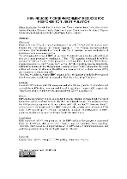HBV-induced microenvironment reduces pDC response to TLR9 stimulation

Autor
Berehovska, Olena
Datum vydání
2024Publikováno v
TOLL 2024 Road to translationNakladatel / Místo vydání
(Nizozemsko)Metadata
Zobrazit celý záznamKolekce
Abstrakt
Hepatitis B virus (HBV) is a non-cytopathogenic virus with DNA genome. It causes an acute hepatitis that may develop into chronic hepatitis B, liver cirrhosis and hepatocellular carcinoma. HBV is described as "stealth virus" as it possesses various mechanisms of interference with immune recognition.We investigated the effect of HBV on activation of plasmacytoid dendritic cells (pDCs), as they are a main producer of interferon α (IFNα). IFNα secretion is induced by toll-like receptor 9 (TLR9) activation, yet this pathway is strictly regulated. One of the TLR9 pathway negative modulators is miRNA146a, which silences the TLR signalling proteins. Importantly, miRNA146a is active in the RNA-induced silencing complex (RISC), which binds the target mRNA and silences it. Mature miRNA-RISC can be sorted into extracellular vesicles (EVs) and transported to surrounding cells.Therefore, we analysed, whether HBV infection affects the quantity of miRNA-146a secreted from hepatocytes, and whether the secreted miRNA146a affects the pDC function.
Klíčová slova
Chronic HBV, miRNA-146a, pDC,TLR9 signaling, extracellular vesicles
Trvalý odkaz
https://hdl.handle.net/20.500.14178/2422Licence
Licence pro užití plného textu výsledku: Creative Commons Uveďte původ 4.0 International




